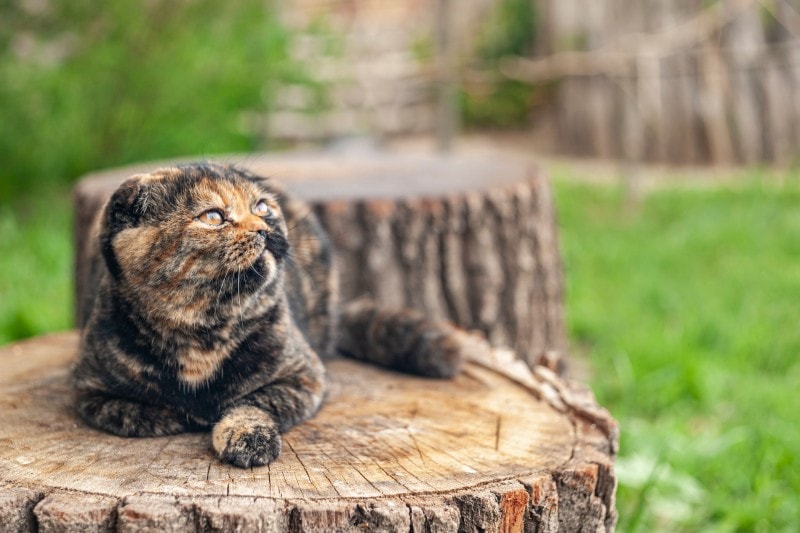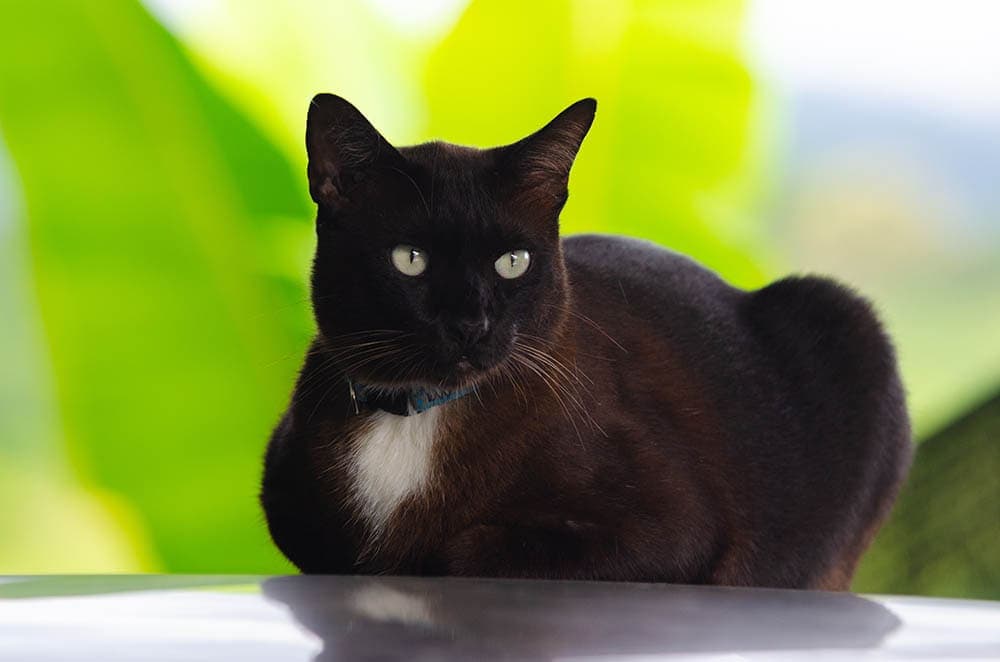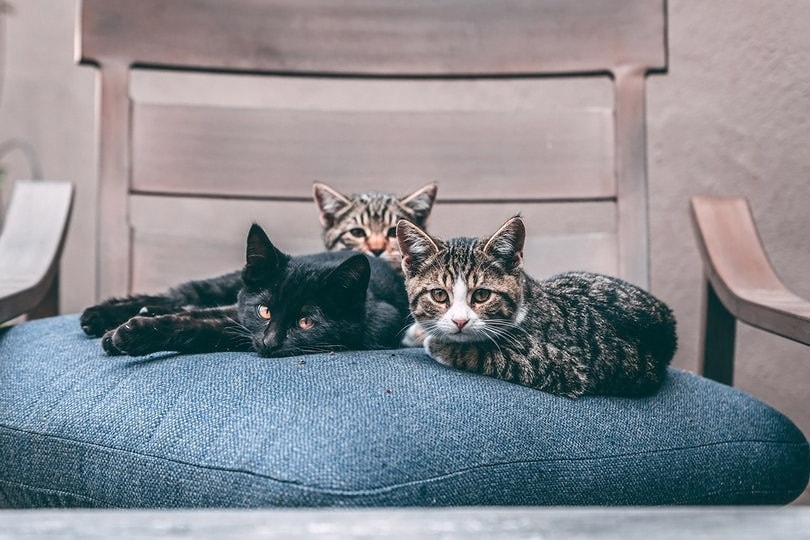Balinese vs. Siamese Cats: The Differences (With Pictures)

Updated on
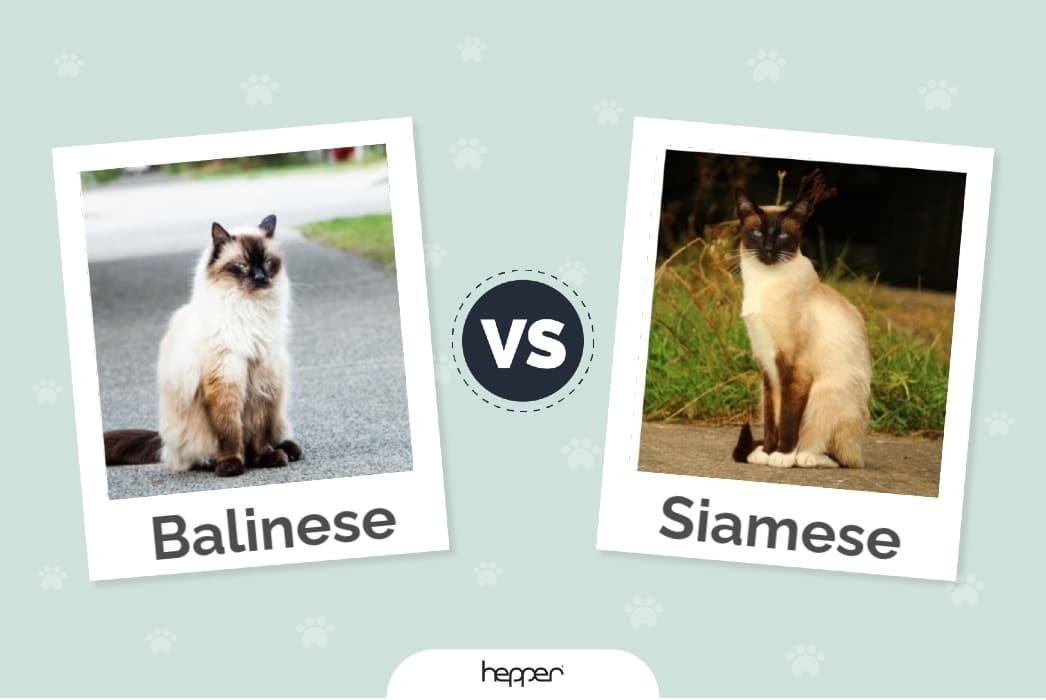
Click to Skip Ahead
Both Balinese and Siamese cats are among the most popular cat breeds in the United States. These breeds are known for their gentle, docile, yet playful natures and their almost constant vocalizations! While Balinese cats are fluffier than their Siamese counterparts, they have the same pointed colors and bright blue eyes.
With so many similarities, what are the differences between these two felines, and how do you choose one over the other? In this article, we lay out the main differences between these breeds and help you decide which is the right one for you. Let’s get started!
Visual Differences
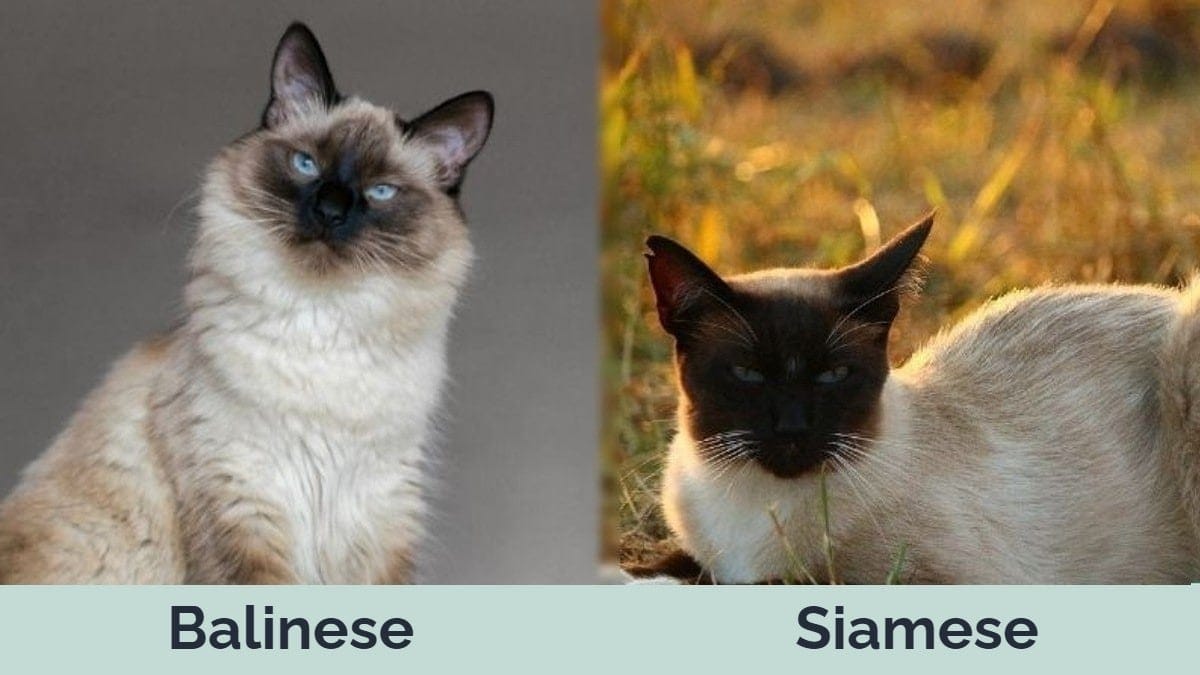
At a Glance
- Origin: United States
- Size(adult): 12–18 inches, 6–12 pounds
- Lifespan: 10–16 years
- Dog-friendly?: Yes
- Origin: Thailand
- Size(adult): 15–20 inches, 6–14 pounds
- Lifespan: 12–20 years
- Dog-friendly?: Yes
Balinese Cat Overview
History
Despite their confusing name, Balinese cats originated in the United States, not the island of Bali in Indonesia, as many people believe. They were given their name due to their graceful manner, which resembles the temple dancers on the island of Bali. Balinese cats were developed from Siamese cats through a genetic mutation that caused them to have longer coats, so they are actually descended from the similar-looking Siamese. They were officially recognized by the Cat Fancier’s Association in 1961.
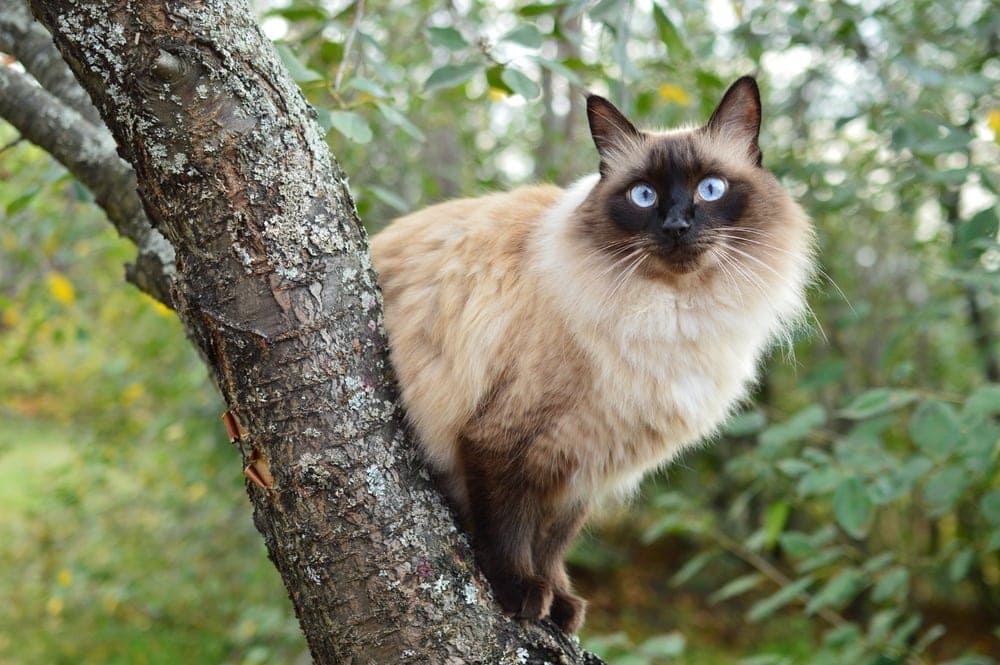
Characteristics & Appearance
Balinese cats are essentially long-haired versions of Siamese cats and are known for their high intelligence, playful nature, and gorgeous appearance. This high intelligence makes them easily trainable, and they can be taught various tricks and commands. These cats are extremely social and enjoy the company of their human family, and they don’t do well being left alone for long periods. While they are docile cats, they are known to be comparatively vocal and attention-demanding at times, so they are not the ideal choice for owners wanting a quiet, independent feline.
They have medium-length, silky coats that require daily brushing to avoid matting and come in a wide variety of colors. They are typically creamy white, with pointed colors like their Siamese cousins that include chocolate, seal, blue, and lilac, and have blue eyes and large ears.
Common Health Issues
Balinese cats are generally a healthy breed but can develop similar health issues to Siamese cats. This includes eye problems like glaucoma and progressive retinal atrophy, and some are even prone to be cross-eyed (although this unique trait has largely been bred out). They are also prone to liver amyloidosis at times and respiratory issues like asthma and occasionally suffer from neurological problems like hyperesthesia syndrome and nystagmus.
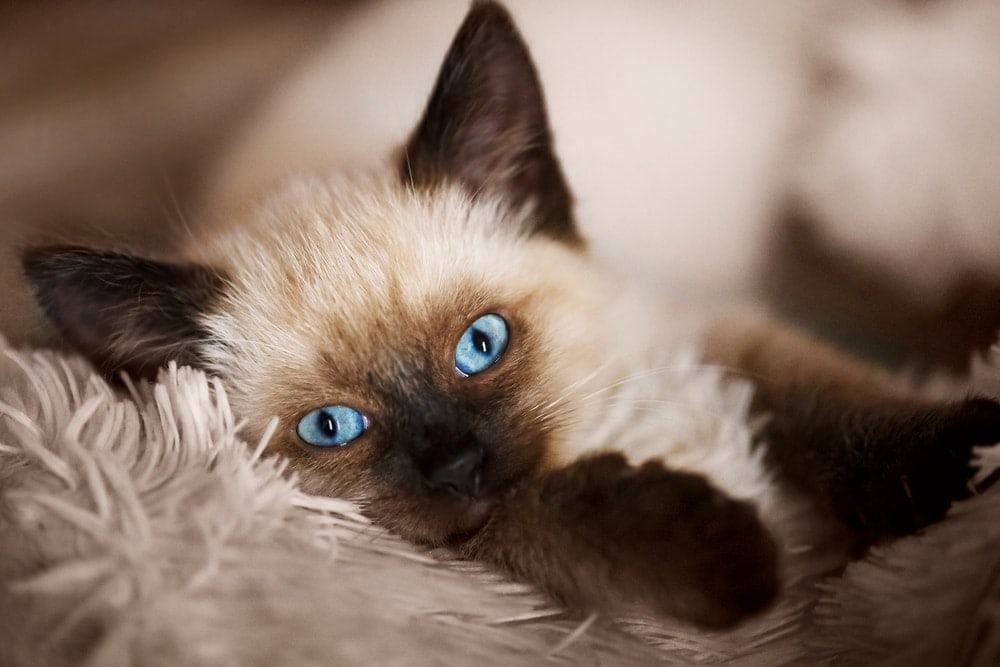
Siamese Cat Overview
History
The Siamese cat is arguably one of the most recognizable cat breeds and certainly one of the most popular. They are also one of the oldest known cat breeds around. Although little is known about their exact origins, it’s commonly believed that they were first bred in Thailand in the 14th century.
They were first imported to the U.S. in the late 18th century, and the breed has since led to the creation of several other popular breeds, including the Balinese and Himalayan.
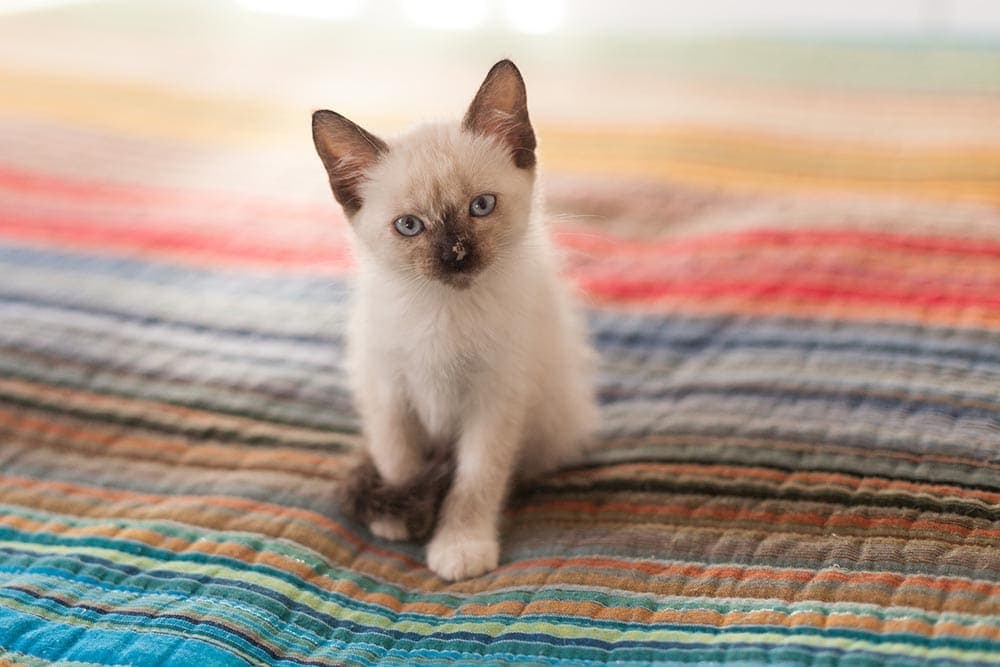
Characteristics & Appearance
Siamese cats are known for being highly vocal and talkative felines, almost too much so for most people. They, like the Balinese, enjoy the company of their human owners and are known to follow their owners around the home voicing their opinion but are slightly reserved. They also do not do well being left alone for long periods, but if they have a partner, they are happy to be at home while the humans are at work. This is why so many breeders recommend owning a pair of Siamese cats rather than just one.
Siamese cats have pointed coloration, with a lithe, muscular body and long legs. They have a round or wedge-shaped head with large ears that are wide at the base and almond-shaped eyes that are always blue. They have fine, short coats that come in four distinct colors: seal, chocolate, blue, and lilac point.
Common Health Issues
Siamese cats do not have any different potential health issues from Balinese cats, although “wedge-shaped” Siamese cats are slightly more prone to respiratory issues than “apple-shaped” Siamese.
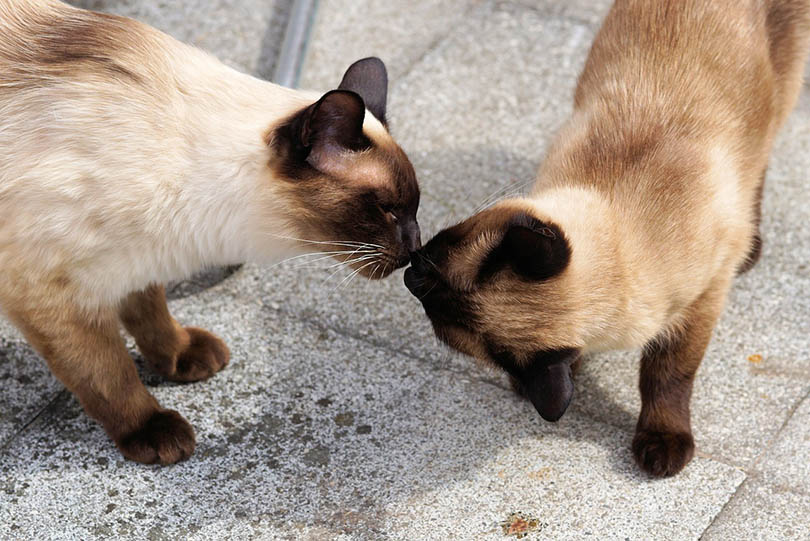
What Are the Differences Between Siamese and Balinese Cats?
Since the Balinese cat was developed from the Siamese, there are few differences between these two breeds. Balinese cats have the characteristic long coat and are slightly smaller and lighter than Siamese cats, with a shorter average lifespan too. Balinese cats are also known to be slightly more attention-demanding than Siamese cats, although both breeds thrive on human interaction.
Other than that, both the Siamese and Balinese have the same personalities, pointed coats, and long, lithe bodies.
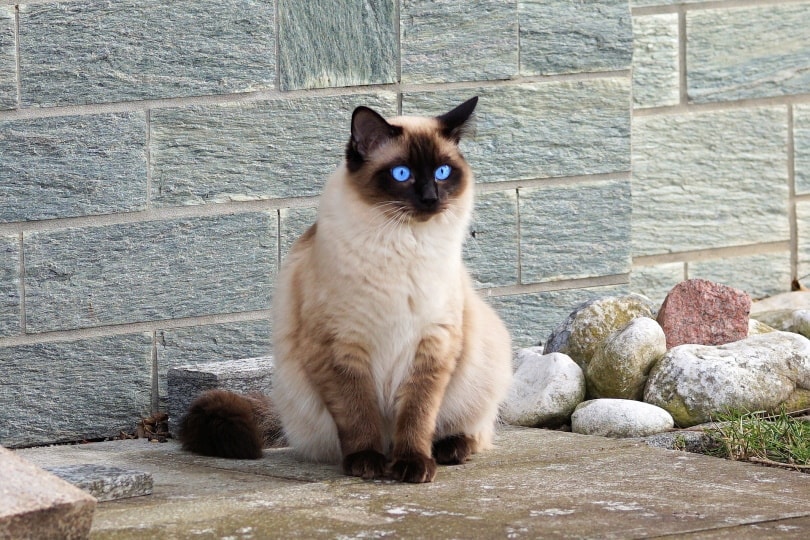
Which Breed Is Right for You?
Both Balinese and Siamese cats make great family pets and wonderful companions for singles or couples. They love to be around their owners, do not enjoy being alone, and are highly intelligent cats that can be easily trained. The key factor to consider with both these breeds is that they need to be around their owners as much as possible, and as such, they are fairly high-maintenance.
That said, the long coat of the Balinese needs daily brushing to avoid matting, so if you’re looking for an affectionate yet lower-maintenance feline, the Balinese may be the better choice.
Related Reads:
- Siamese Vs. Oriental Shorthair Cat: Differences & Similarities
- Toyger vs Bengal: Differences Explained (With Pictures)
Featured Image Credit: Left: Balinese Cat, SJ Duran, Shuttertock | Right: Siamese Cat, rihaij , Pixabay


